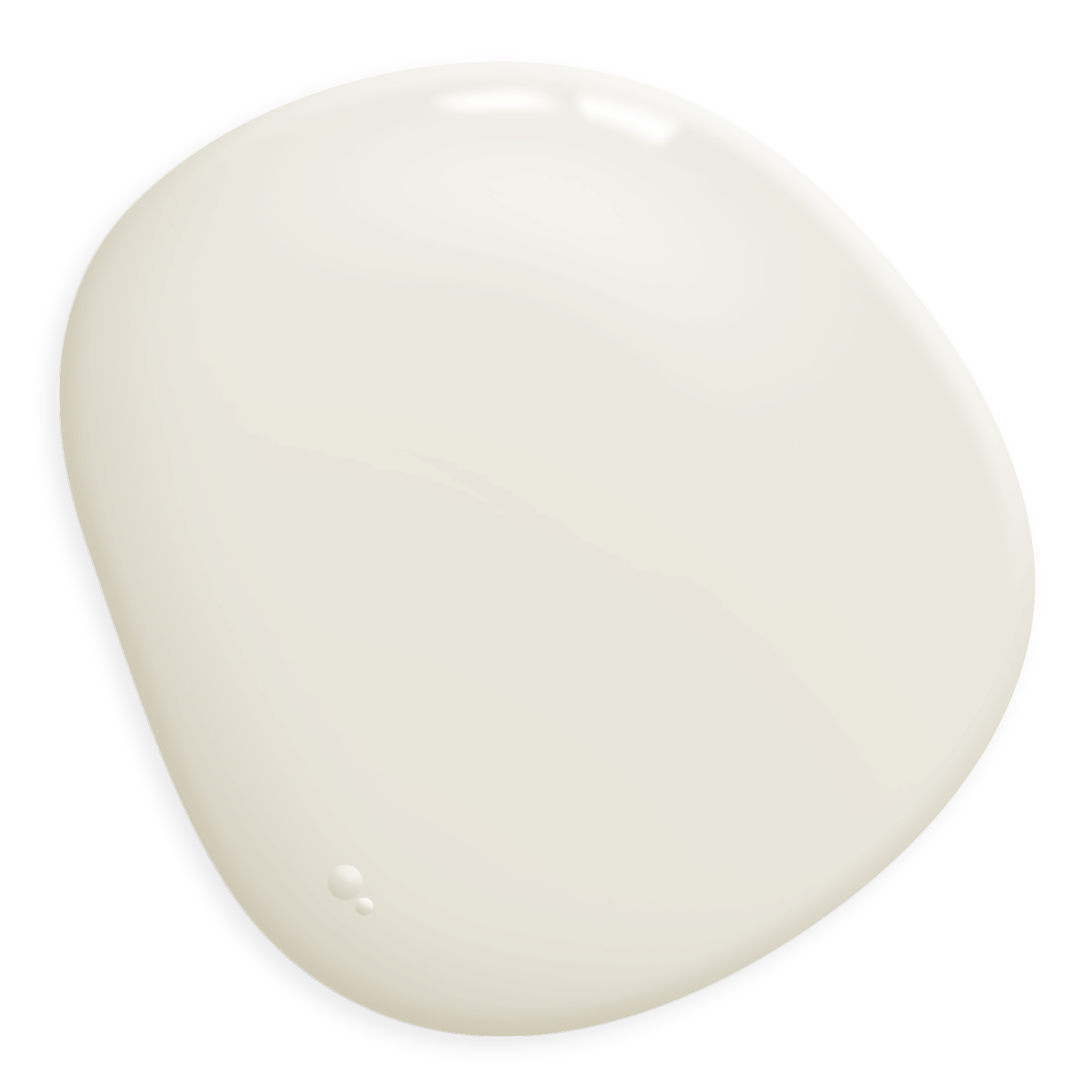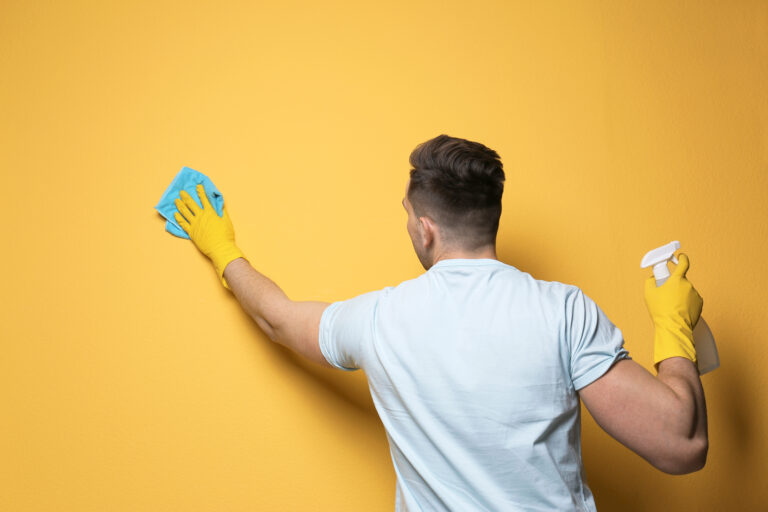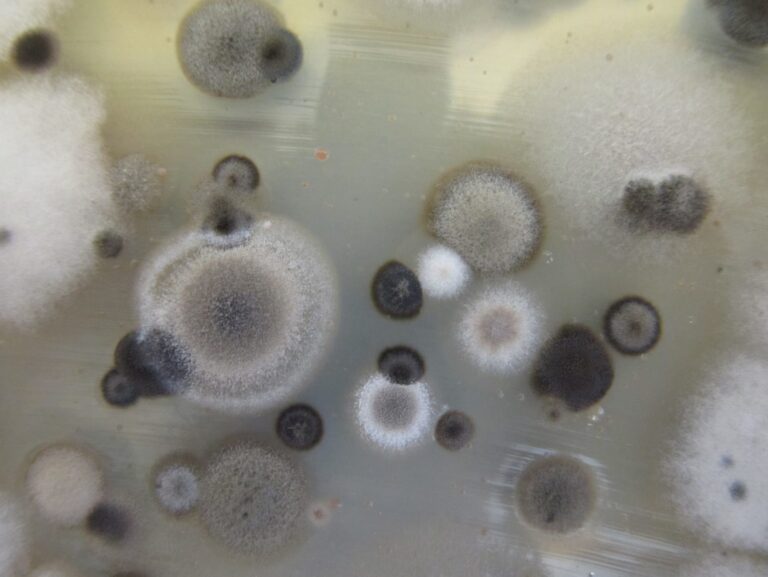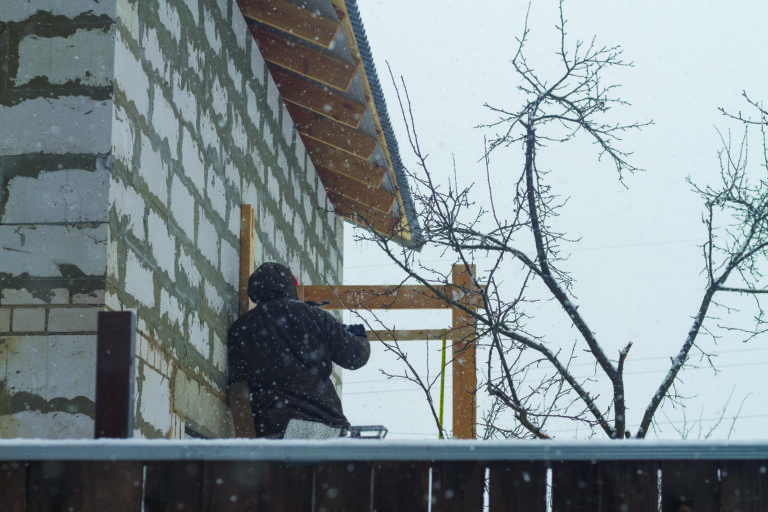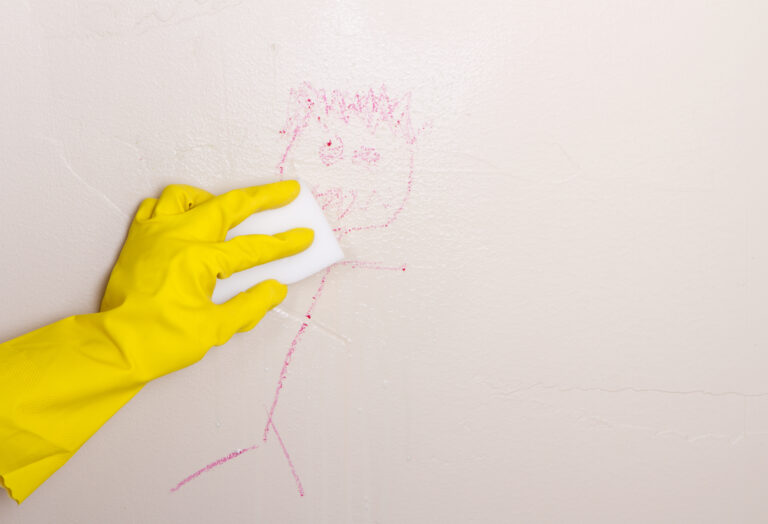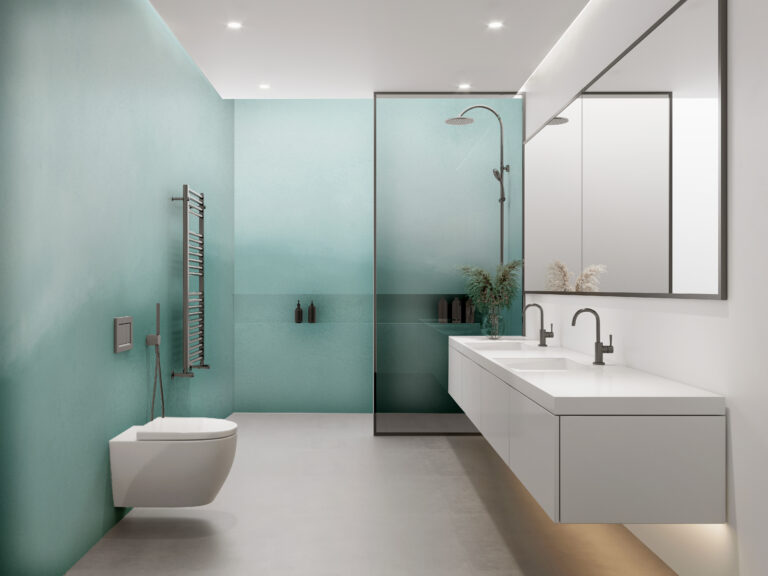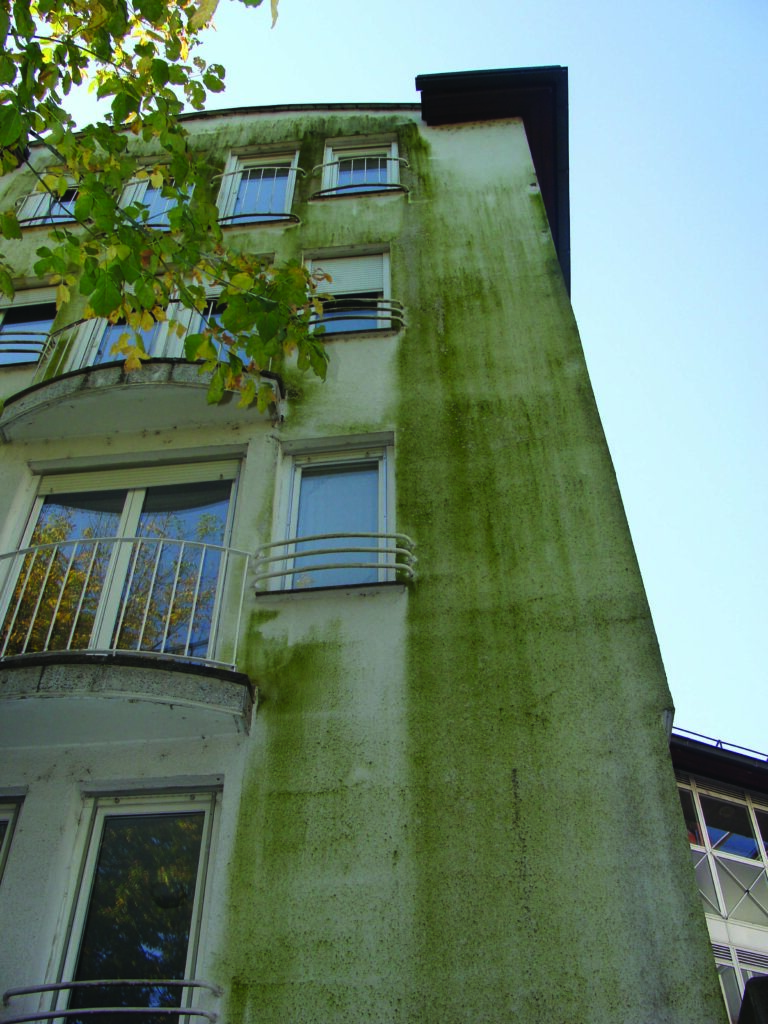The decision when it is the right time to repair or renovate the facade depends on the severity of the damage to the finishing layers or thermal insulation.
Great emphasis is also placed on the energy improvement of older buildings without or with a low thickness of thermal insulation, as they have massive heat losses as a result. Many times, the reasons for the renovation of the facade are also surface damage, which can be seen in the form of spots, micro-cracks, or stains. These can be a common occurrence on facades, but it is important to distinguish when it is mainly dirt and when it is microorganisms such as fungi, mould, and algae. The condition for their development is mainly humidity, which is why they most often grow in sunless positions, such as for instance the east and north sides of the facade. The reason for the renovation of the facade can only be related to the aesthetic appearance of the building itself, for instance, when the colour layer of the facade changes after a certain period. We must not forget maintenance work on facades, nor essential preventive measures that can prevent various damages and extend the life of the entire thermal insulation system.
Repair of micro-cracks on facades
Repairing micro-cracks on the facade is carried out with a system solution in two steps:
- Application of REVITAL Primer NG.
- Painting with REVITALCOLOR micro-reinforced facade paint, which bridges hairline cracks.
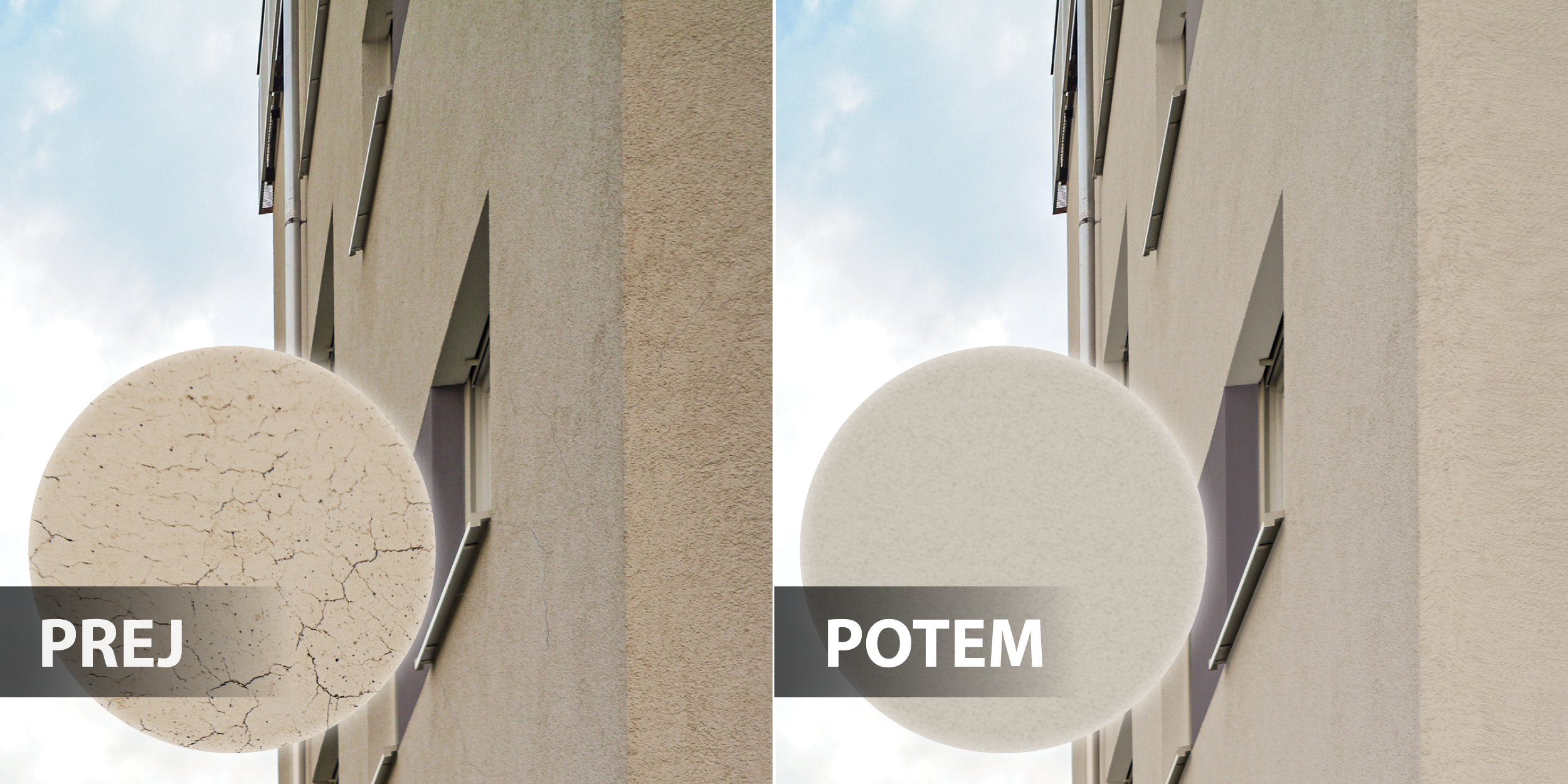
Additional insulation of the facade
Today, many older buildings are insulated with only a few centimetres of insulation, so if the insulation is less than 10 cm, it makes sense to consider additional insulation of the building. Five or so extra centimetres of thicker thermal insulation, which was most often installed years ago for thermal protection of the building envelope, does not meet the requirements of the current Regulations on the efficient use of energy in buildings. Residential and other buildings without or with thin thermal insulation can have massive heat losses. The investment in additional thermal insulation pays off, as the energy savings are significant after the energy improvement of the building. An additional plus for additional insulation of the building is also the funds that can be obtained through the Ekosklad fund. The implementation of additional insulation of the facade is carried out in several steps. During the implementation, it is necessary to take into account the drying of the built-in materials and layers, as well as the order of implementation.
- Disinfection of infected surfaces: if necessary, wash the surfaces with a jet of water and coat them with diluted Algicide when dried.
- Primer: if necessary, Acryl emulsion.
- Additional insulation: for a well-prepared substrate, we can install a suitable JUBIZOL facade system (JUBIZOL Strong, JUBIZOL Micro Air, JUBIZOL Premium, JUBIZOL EPS, JUBIZOL MW, JUBIZOL Kulirplast).
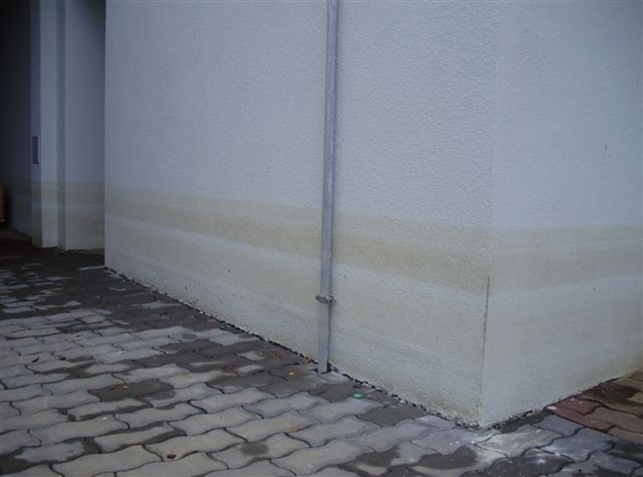
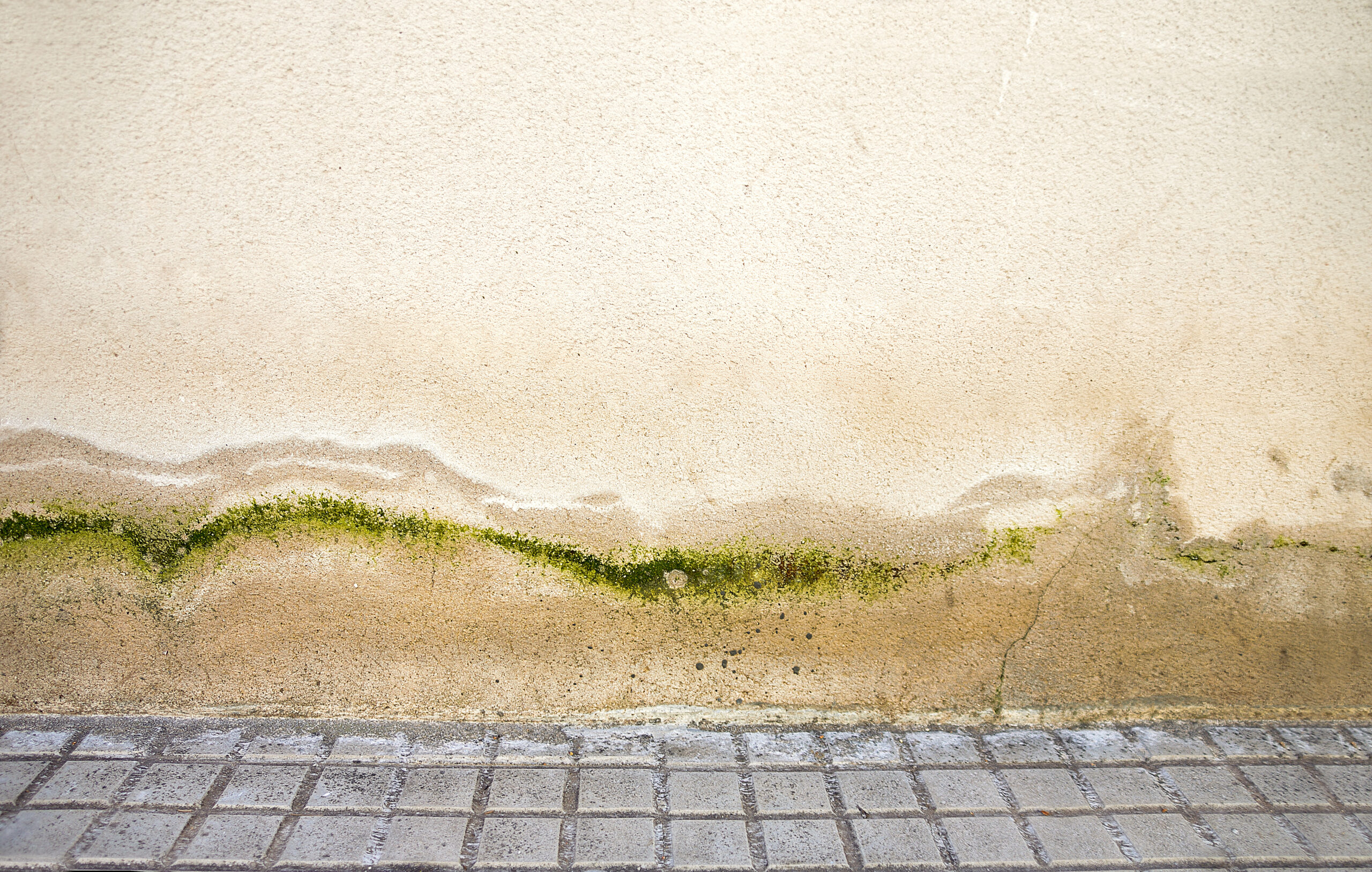
Renovation of facade surfaces after floods
The renovation of facade surfaces that were soaked with water during floods or for some other reason and only suffered damage in the form of stains or deviations and flaking of paint coatings differs from normal renovation painting mainly in the preparation of the substrate. The renovation method depends on the type and intensity of damage. Surfaces that have been in contact with water, contaminated with spilled fuel oil, faeces, or toxic and other dangerous substances are a particular problem. The process of renovating such surfaces is demanding and can only be determined based on the results of an inspection of each specific building. The biggest challenge is the blocking of substances easily and quickly soluble in water, which remained in the outer layers of the thermal insulation system after drying and cannot be removed from them. If the blocking is not successful, during renovation painting in the applications of water-based paints and base coats, these substances dissolve and, due to migration through the emerging paint film, re-form stains, regardless of the number of coats and the level of coverage of the newly applied paint. It also makes sense to install additional thermal insulation on older, poorly insulated buildings, as the heating costs are significantly lower.
Renovation of facade surfaces with built-in insulation from expanded (EPS) or extruded (XPS) polystyrene in carried out in the following steps:
- If possible, remove dirt from dirty and soaked facade surfaces with a warm water solution of universal household cleaners (rubbing the stains with a soft brush if necessary), followed by rinsing the cleaned surface with clean water.
- It is necessary to dry the facade surfaces for at least a month, as all further renovation interventions only make sense when the humidity of the wall surfaces falls below 5 %.
- Coat the facade surfaces with diluted JUKOL Primer (JUKOL Primer : water = 1 : 1).
- Paint the facade surfaces with REVITALCOLOR micro-reinforced facade paint, a two-coat application that will be tinted for you at any of JUB’s numerous JUMIX tinting stations in stores selling paint throughout Slovenia.
Renovation as described above is suitable only if the insulation is made of expanded (EPS) or extruded (XPS) polystyrene.
Sanacija vlažnih zidnih površin
Vlaga je glavna težava, ki se pojavlja tako pri starejših zgradbah, kot pri novogradnjah zaradi nepravilno vgrajene hidroizolacije. Glavni viri so talna in atmosferska vlaga (dež ali sneg) ter vlaga, ki se pojavlja zaradi kondenzacije vodne pare. Trikomponenti sistem JUBOSAN WTA ponuja funkcionalno in estetsko rešitev težav pri problemih z vlago. Z JUBOSAN sanirnim sistemom WTA bo hiša ali objekt dodatno zaščiten pred vlago. Tu gre za celovit sistem od temeljnega obrizga, grobega sušilnega ometa, do končnega finega ometa. Opisan sistem omogoča hitrejše izsuševanje stalno vlažnih zidov, ki so prizadeti kot posledica vpliva kapilarnega vleka. Edinstvena sestava materialov omogoča, da se soli, ki se prebijajo skozi zidove, začnejo nalagati v samem sistemu ter se tako ne pojavijo (naplavljajo) na površini zidu. Sistem je primeren za sanacijo zunanjih kot tudi notranjih zidov.
